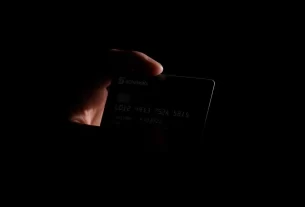Can student loan debt really be forgiven? Yes, under the FAFSA loan forgiveness program. The Department of Education is working to cancel student debt. They use programs like FAFSA loan forgiveness to help those in need.
The Biden administration has worked hard to forgive student loans. Over $183.6 billion in debt has been forgiven, helping more than 5 million borrowers. The FAFSA loan forgiveness program is part of this effort. We’ll look at who can apply and how in this article.
Breaking Down the New FAFSA Loan Forgiveness Initiative
The FAFSA loan forgiveness program aims to help borrowers struggling with loan repayments. With education costs rising, many students need loans to study. Repaying these loans can be tough. The Department of Education is making headlines with its efforts to cancel student debt. We’ll explore the program’s details in this section.
Key Takeaways
- The FAFSA loan forgiveness program is designed to provide relief to borrowers who are struggling to repay their loans.
- Over $183.6 billion in student debt has been forgiven during the Biden administration.
- More than 5 million borrowers have benefited from the debt forgiveness.
- The FAFSA loan forgiveness program is one of the initiatives aimed at providing relief to borrowers.
- The Department of Education has been working to cancel student debt through various programs, including FAFSA loan forgiveness.
- Approximately 17 million current and aspiring college students fill out the FAFSA each year to qualify for student loans, grants, and more.
Breaking Down the New FAFSA Loan Forgiveness Initiative
The new FAFSA loan forgiveness initiative is a big step forward. It makes it easier for families with incomes under $60,000 to get help with student loans. This change will help about 610,000 more students from low-income families get Pell Grants.
But, the launch of the new FAFSA has hit some bumps. A glitch stopped some students from applying if their parents don’t have a Social Security number. Still, the Education Department is giving $50 million to help schools deal with these issues. So far, about 7 million students have filled out the new FAFSA form. It now lets students list up to 20 colleges, up from 10 before.
The new FAFSA has fewer questions, making it easier for students. Some might only need to answer 18 questions, down from up to 103 in the old form. It’s also available in 11 languages, helping more families. And, parents won’t get financial aid breaks for having kids in college at the same time anymore. These changes are a big help for borrowers, offering more debt relief and forgiveness options.
Some of the benefits of the new FAFSA include:
- Increased accessibility for non-English speaking families
- Reduced number of questions, making the process simpler and more efficient
- Expanded eligibility for Pell Grants, providing more students with access to financial aid
- Increased flexibility, allowing students to list up to 20 colleges
Who Qualifies for the Latest Debt Relief Program
To qualify for the latest debt relief program, borrowers must meet certain criteria. The program aims to help those struggling to repay their loans. It offers financial aid through scholarships and teacher loan forgiveness programs.
Some key criteria include:
- Having a federal student loan, such as a Direct Loan or Federal Family Education Loan
- Being enrolled in an income-driven repayment plan
- Meeting the requirements for teacher loan forgiveness, such as working in a low-income public school
There are other options for borrowers facing loan repayment challenges. These include financial aid like scholarships and grants. Borrowers can also look into income-driven repayment plans to make payments more affordable. https://youtu.be/7XbOSW8GVQA?si=BbN-5rPeNYAGRwZ1.
It’s important to know that different debt relief programs exist. Some, like teacher loan forgiveness, target specific professions or loans. Others, like income-driven plans, are more flexible and available to a broader range of borrowers.
Understanding FAFSA and Its Role in Student Debt
The Free Application for Federal Student Aid (FAFSA) is key for getting financial aid, like student loan forgiveness. It has changed a lot, making it easier for students to apply. With the supreme court’s recent ruling, knowing how FAFSA works is very important.
The FAFSA now has only 36 questions, with some students answering just 18. This makes applying for financial aid, like federal direct subsidized loans, simpler. Students can get loans from $3,500 to $5,500 each year. They might also get federal grants, from $100 to $4,000 yearly.
- Maximum Pell Grant award for the 2024–25 award year is $7,395
- Federal work-study jobs are available to both undergraduate and graduate students
- Federal loans generally have more favorable terms compared to private student loans
Understanding FAFSA and federal loans helps students make smart choices about their financial aid. The supreme court’s ruling on student loan forgiveness is big news. It’s crucial to keep up with the latest updates.
Alternative Debt Relief Options Beyond FAFSA
The FAFSA loan forgiveness program is just one way to help borrowers. Many people look into other options like online classes and public service loan forgiveness (PSLF). Online classes are flexible and can help with debt relief.
Income-driven repayment (IDR) plans are another choice. They can lead to loan forgiveness after 20 or 25 years of payments. Borrowers might also qualify for forgiveness through the SAVE Plan or Public Service Loan Forgiveness (PSLF). This program forgives loans after 120 payments for those in government or nonprofits.

There are more ways to get debt relief. Total and Permanent Disability (TPD) discharge can wipe out federal loans for those with severe disabilities. Military members might get interest rate caps and Public Service Loan Forgiveness (PSLF). Exploring these options can help find a debt relief plan that fits your needs.
Public Service Loan Forgiveness Integration
The public service loan forgiveness (PSLF) program helps those in public service, like teachers and nurses. To qualify, you need to make 120 payments while working full-time for a qualifying employer, like the department of education.
Teachers also have the teacher loan forgiveness program. It’s for those working in low-income schools or subjects with a high need for teachers. The department of education provides resources to help with the application process.
Some key benefits of PSLF and teacher loan forgiveness include:
- Loan forgiveness after 10-25 years of qualifying payments
- Qualifying payments can be made under various repayment plans, including income-driven plans
- Borrowers can combine PSLF with other debt relief options, such as the new FAFSA rules
For more information, visit the department of education’s website or talk to a financial aid expert. Understanding the requirements and process helps borrowers make informed decisions. This way, they can take advantage of these valuable programs.
| Program | Eligibility Requirements | Benefits |
|---|---|---|
| PSLF | 120 qualifying payments, full-time employment with a qualifying employer | Loan forgiveness after 10-25 years |
| Teacher Loan Forgiveness | Teaching in a low-income school or subject area with a high need for qualified teachers | Up to $17,500 in loan forgiveness |
Department of Education’s Implementation Strategy
The Department of Education is working hard to make the FAFSA loan forgiveness program easier. They want to simplify the application and help borrowers more. They plan to use $50 million to help non-profit groups that support financial aid. This is part of their effort to help students and families who need it most.
Some key features of the Department’s plan include:
- Releasing test versions of institutional student financial aid information records (ISIRs) to help colleges prepare their systems
- Providing FAFSA completion data to aid in the assessment of the FAFSA submission process
- Offering a new resource on StudentAid.gov with tips for successfully completing and submitting the 2024–25 FAFSA form
The Department is trying to make the FAFSA process easier. This is important because students and families have faced many challenges. By offering more help, the Department hopes to make it easier for students to get financial aid and scholarships.
The Department’s plan is key to the FAFSA loan forgiveness program’s success. It needs to support borrowers well and give them the tools to understand financial aid. Working with non-profit groups and schools, the Department aims to make sure more students get the aid they need.
What This Means for Current and Future Students
The FAFSA loan forgiveness program is changing things for students now and in the future. Undergrads might find it easier to get into college with more Pell Grants. Graduate students could also get a break from their student loans, making it easier to get advanced degrees.
Changes to Parent PLUS Loans are helping families too. They can now handle the costs of their kids’ education better. The Biden administration is working hard to make college affordable for everyone.
Even with challenges ahead, things are looking up. The shift towards private student loans and online classes is promising. By keeping up with these changes, students today and tomorrow can have a brighter future without being held back by debt.
FAQ
What is the FAFSA loan forgiveness program?
The FAFSA loan forgiveness program helps borrowers with federal student loans. It’s for those who are struggling to pay back their loans. This includes people facing financial hard times or having trouble finding jobs.
Who is eligible for the FAFSA loan forgiveness program?
Anyone with federal student loans can apply. This includes Direct Loans and Federal Family Education Loans. Check the specific rules to see if you qualify.
How does the FAFSA process determine financial aid?
The FAFSA is key in figuring out how much financial aid you get. It helps with grants, scholarships, and federal loans. Knowing how it works is important for borrowers.
What are the alternative debt relief options beyond FAFSA?
Besides the FAFSA program, there are other ways to manage debt. Online classes and the public service loan forgiveness (PSLF) program are examples. Look into these options to find what works best for you.
How does the public service loan forgiveness (PSLF) program integrate with the new FAFSA rules?
The PSLF program helps those in public service jobs. It’s changed a lot recently. Understanding how it works with the new FAFSA rules can help you get more debt relief.
What is the Department of Education’s implementation strategy for the FAFSA loan forgiveness program?
The Department of Education is key in making the FAFSA program work. Their plan includes outreach and education. Keep up with their updates to know how it affects you.
How will the FAFSA loan forgiveness program impact current and future students?
The program will affect both current and future students. It’s important to know the good and bad sides. Also, understand changes to Parent PLUS Loans to plan your education and finances wisely.

